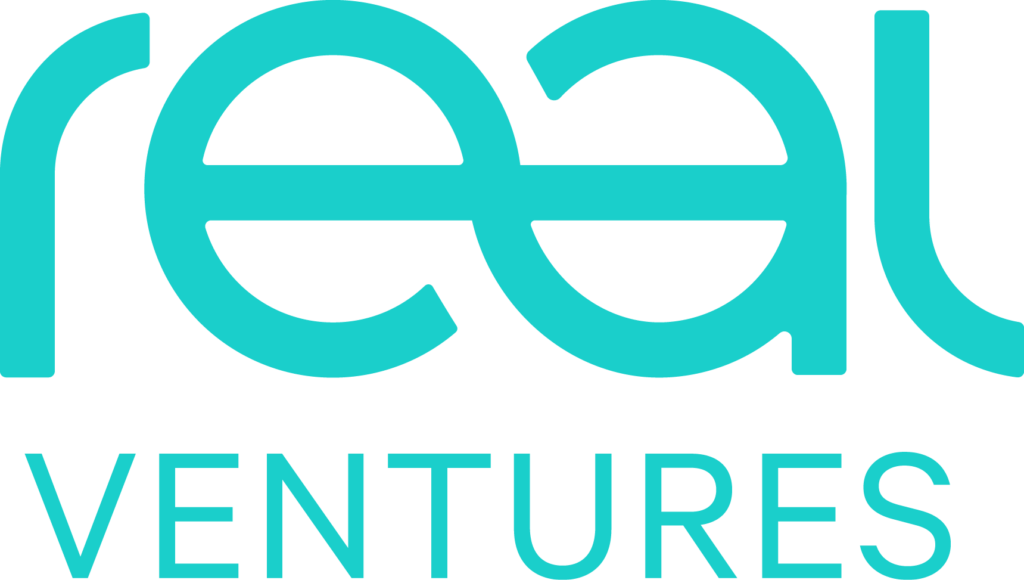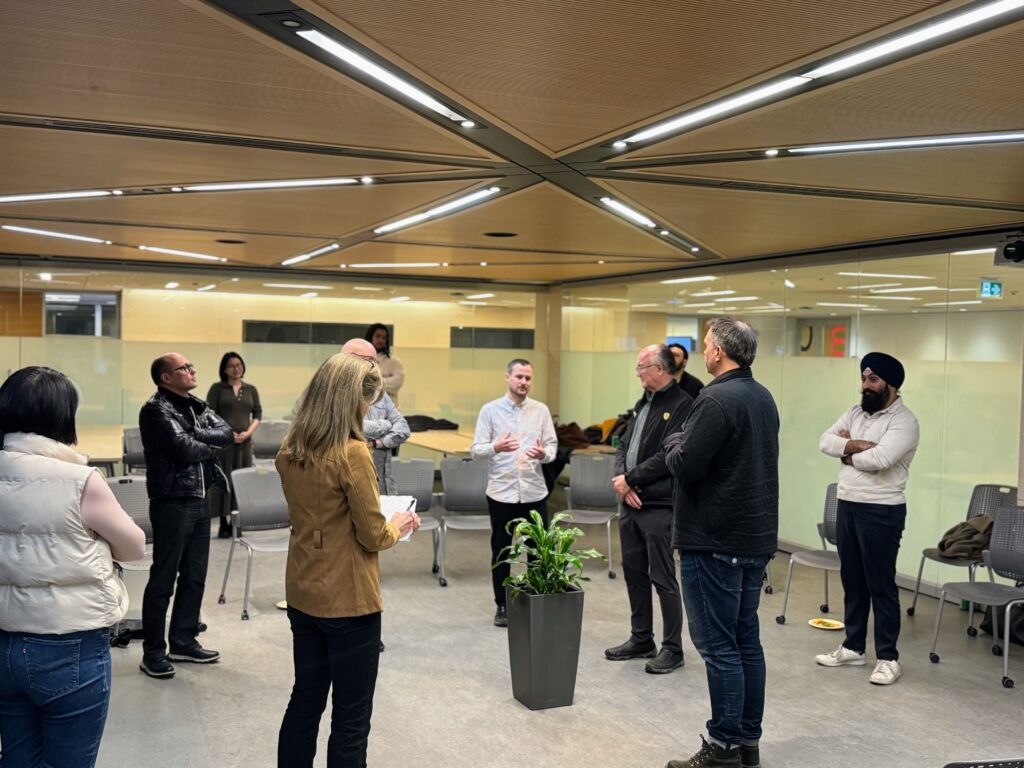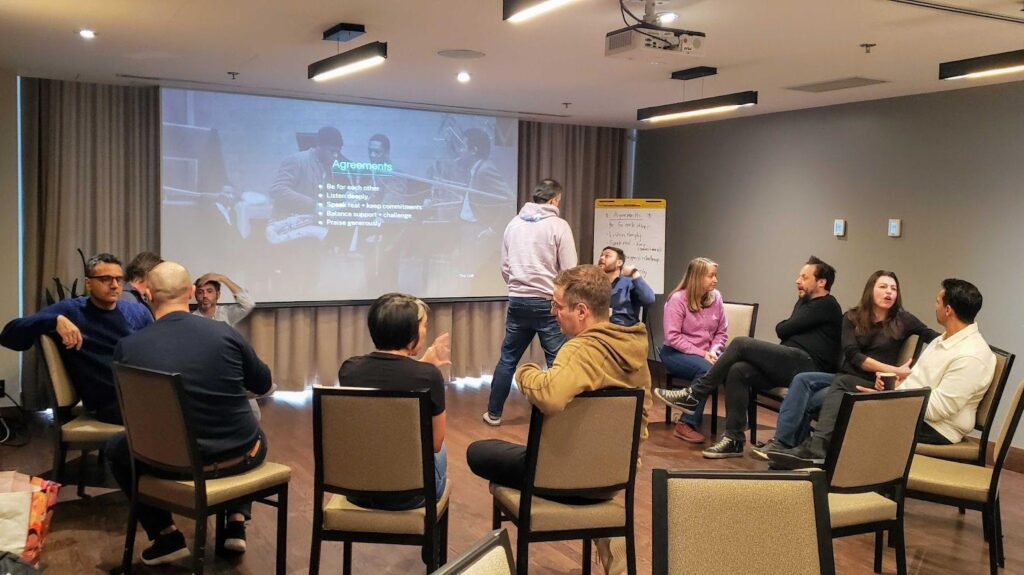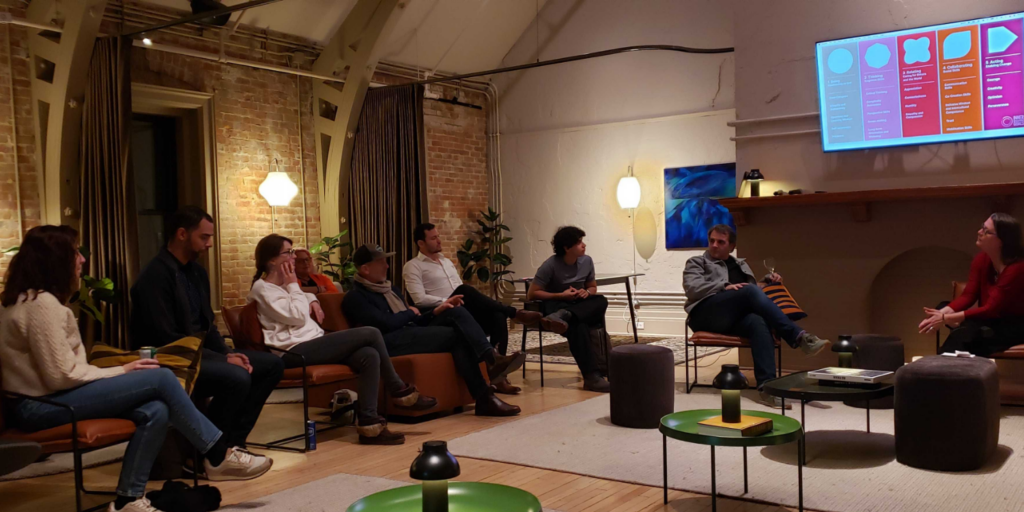The team at Real Ventures has often faced interpersonal challenges and through the process of trying to resolve them, we stumbled upon a formula for running any meeting that has been so profound for us that we want to share it with as many people as we can.
Our hope is that others will adopt, refine and share this “magic formula”!
Background
People, discussing subjects that they care about, become excitable. They have so much to share, so much perspective to provide, so much experience to contribute! All too often — in both personal interactions and in business — this excitement can evolve into irritation and frustration when others don’t understand you, don’t try to understand you, or don’t even give you a chance to contribute your perspective or experience.
This is most obvious when people start talking over or interrupting each other. There are, however, people who have learned not to show these visible signs of excitement — people who are often described as “polite and respectful”. Their outward demeanour might suggest that they don’t get excited, but in all likelihood, their excitement causes these “polite” people’s minds to race, and as it does, they replace talking over others with thinking over others. These reactions both lead to the same outcome: they prohibit that person’s ability to listen.
While it takes a little time and practice, we have found that it is possible to benefit from the excitement around a subject without the irritation and frustration. While we will dig into our meeting formula below, first let’s look at a few ways everyone can improve their interactions and communication:
Tip 1:
Active Listening: Focus on the person speaking, actively suppressing your own thoughts and judgements, and provide the speaker with small verbal and physical cues to indicate you are comfortable to hear more. This is hard but worth the effort.
Tip 2:
Teaching vs Learning: Talking/Thinking is akin to being in Teaching mode (teaching others/teaching yourself) while Listening is being in Learning mode. Most people spend too much time in any meeting in Teaching mode, but the most effective meetings and discussions are when only one person in the room is in Teaching mode at a time.
Tip 3:
Patience: Believe that your opportunity to express whatever is important to you will come and that when it does, it will be the right time. Don’t scan for the opportunity to force an interjection — your turn will come — and knowing when it will come is made much clearer with the Magic Meeting Formula.
The Magic Meeting Formula
The above tips are certainly helpful in any interpersonal interaction but we found that building a formula — a code of conduct — for meetings, takes these suggestions a step further and really enables everyone to take turns teaching and learning in a group setting.
How it works:
The Chair initiates the meeting and allocates the first speaker. The speaker starts and all other participants look at the speaker and focus on listening to him/her.
While listening to the speaker, if participants have thoughts that are stimulated by what they hear, they should:
- Try to push the thoughts away and refocus on listening.
- If the thought comes back, raise a finger in the air to indicate they have a thought they would like to share. The finger should be held up clearly so that all participants can see it and it should not be put down or lowered until that participant starts speaking. If they see that another participant in the room already has a finger raised, then they should raise two fingers; if they see two fingers have already been raised, then they should raise three fingers, etc..)
- Let the thought drift away and immediately refocus on listening.
NOTE: When someone raises a finger, the speaker is not expected to stop or invite the person to say something. The speaker should regard it as a placeholder for the other participants and not a request to interrupt. The speaker should, however, use it as a reminder to keep their comments as brief and to the point as possible. Every finger raised is simply a reinforcement of that concept, but the speaker should feel free to continue until they have finished. - If at any time the participant no longer wishes to make a comment, they can just lower their finger.
- Have patience. Participants must wait until the speaker has completely finished before taking their turn to speak. When a new speaker starts, other participants holding fingers in the air will take down one finger. For instance, if a participant had three fingers in the air and the speaker who had one finger in the air takes their turn to speak, the participant would drop a finger and now hold two fingers in the air.
- Decide whether they will be making an “in-flow” or an “out-flow” comment. An in-flow comment is one that adds context or contrast to the specific train of thought of the speaker, while an out-flow thought is one that is important or noteworthy but tangential to what the speaker was saying.
When the participant’s turn to speak arrives, they have three options:
– Make their in-flow comment,
– Make their out-flow comment, or
– If they have an out-flow comment, they may ask the next participant in the queue if they have an in-flow comment, and if yes, they may swap places in the queue.
All three choices are equally valid and it is completely at the discretion of the upcoming speaker to decide whether to in-flow, out-flow or swap. - Any speaker may use their place in the queue to ask anyone else a direct question. If a person is asked a direct question, they may respond without being in the queue, but they may only respond to the specific question, and no follow-up comment or question is allowed by the original speaker. After the response, the next speaker in the queue takes their turn.
- When no fingers are raised, the Chair may move to the next subject.
Other Points of Order:
- The Chair is a participant in the meeting but also needs to be conscious of time constraints. As such, the Chair may interject between speakers and remind participants that time is tight and a decision is needed, or that another subject needs to be discussed, but should try not to limit anyone’s contributions. Everyone should feel that they have provided their full input. After an interjection, the next speaker in line would be free to start.
- Any participant may make a supportive sound or say a supportive word while someone else is speaking — but nothing negative. Nothing should be said that might be distracting to others’ focus on listening.
- If any participant temporarily forgets to use the formula, another participant should raise a finger and say “Excuse me!” Participants will then refocus on the person who raised the finger and that person can simply reset the meeting by saying “Anyone who wishes to speak must follow the formula.”
Our outcomes
Since introducing this “magic formula” to our meetings — large and small — we have found that our team members are visibly more engaged: they show (quiet) signs of active listening and no longer jump in over each other when they have a big thought. We were all guilty of this before, no matter how respectful we were trying to be. After all, if you believe that you’re not going to have a chance to speak unless you interrupt someone else, then you’re surely going to spend a lot of time both thinking and speaking over others.
The method has also helped me and my colleagues to feel more aware and present in meetings. Rather than thinking about what I would do in a given situation or thinking of a response, I hold the thoughts in the back of my mind, while refocusing on the speaker.
It has also brought more fun into our meetings! If someone accidentally speaks out of turn, it is quickly cut off with an “Excuse me!” and a chorus of laughter, after which the interrupter holds up their finger, or two… or three, and the original speaker gets back on track. As a result, our communication has become clearer and more effective, and everyone feels that they are being heard.
What do you think?
Now that you understand the method, if you decide to implement it in your team meetings, board meetings, committees and any other group interaction, please let us know how it goes or if you have suggestions for how we can improve upon it.
**********
For more tips, insights, founder stories, ecosystem deep dives and industry trends, sign up for our newsletter and follow us on Twitter, LinkedIn and Facebook.




